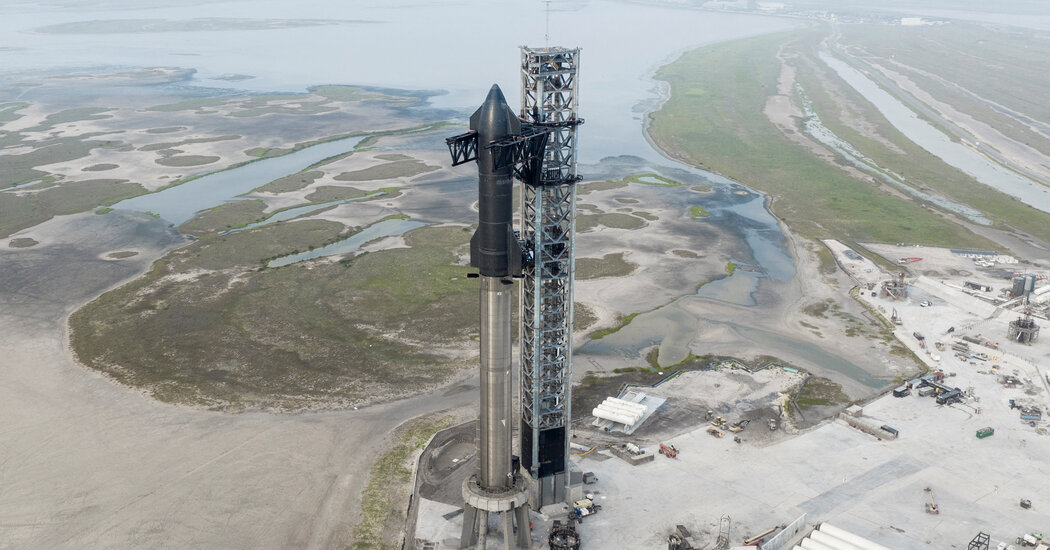Elon Musk’s silvery vision of sending humans to the moon and Mars stands next to a 145-foot launch tower in the southern corner of Texas. It is a new SpaceX rocket called Starship that is more powerful than any vehicle that has traveled to space.
As early as Monday morning, SpaceX will attempt to launch the Starship prototype into space for the first time. Here’s what you need to know about the flight.
When will the Starship launch and how can I watch it?
Starship and the Super Heavy booster that will launch it into orbit will be loaded with propellants early Monday morning at a SpaceX test site in Texas, just outside the town of Brownsville. The launch site, which SpaceX calls Starbase, is close to the Gulf of Mexico.
SpaceX has already scheduled the flight for 8 a.m. Eastern time, and it could launch any time between then and 10:30 a.m. The company said it would start a live stream on its YouTube channel 45 minutes before the rocket is ready to take off.
If problems arise and SpaceX is unable to launch on Monday, it will continue to try throughout the week. While the launch site looked hazy on Sunday afternoon, said SpaceX the weather looked “pretty good for tomorrow morning, but we’ll keep an eye on wind shear.”
What is Starship?
It is the tallest rocket ever built – 394 feet tall, or nearly 90 feet taller than the Statue of Liberty including the pedestal.
And it has the most engines ever in a rocket booster: The Super Heavy, the lower section that will propel the topmost Starship vehicle into orbit, has 33 of SpaceX’s powerful Raptor engines protruding from the bottom. They are capable of generating 16 million pounds of thrust at full throttle, far more than the Saturn V that carried the Apollo astronauts to the moon.
Starship is designed to be completely reusable. The Super Heavy booster will land just like the one for SpaceX’s smaller Falcon 9 rockets, and Starship will be able to fly through the atmosphere like a sky diver before flipping to a vertical position to land.
Why is SpaceX building Starship?
SpaceX’s current Falcon 9 rocket is the most launched rocket in the world. It has launched into space 24 times in 2023, most recently on Friday night.
Starship is the next step. It could carry a lot more cargo and a lot more people than Falcon 9. And because it’s fully reusable, Starship could significantly reduce the cost of launching payloads into orbit.
NASA is paying SpaceX to build a version of the vehicle to transport astronauts from lunar orbit to the lunar surface for the Artemis III and IV missions later in the decade. The spacecraft is also central to Mr Musk’s vision of sending humans to Mars.
What happens during the flight?
For Monday’s test flight, Starship will fly part of the way around Earth, starting from Texas and crashing into the waters of Hawaii.
Eventually, SpaceX hopes to land both the Super Heavy booster and the Starship orbital vehicle on a regular basis to reuse them for future launches. But the spacecraft for Monday’s flight will crash into the ocean and sink. They are intended as an initial test of the vehicles and the data allows engineers to fix what isn’t working and make improvements.
About eight minutes after Monday’s launch, the Super Heavy booster will splash into the Gulf of Mexico. The Starship vehicle will fly higher into space, reaching an altitude of about 150 miles and traveling around the Earth before re-entering the atmosphere. If it survives reentry, about 90 minutes after launch, it will splash into the Pacific some 60 miles north of the island of Kauai.

